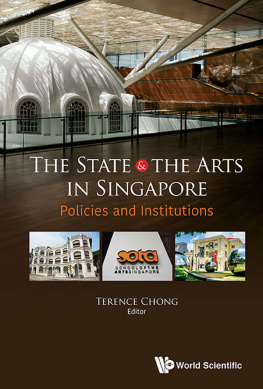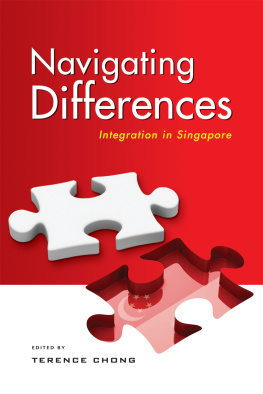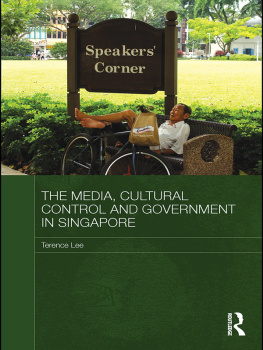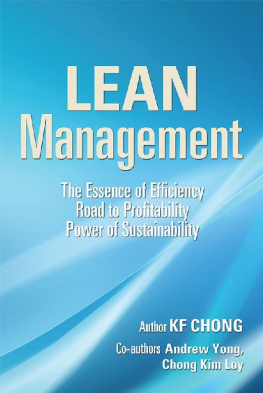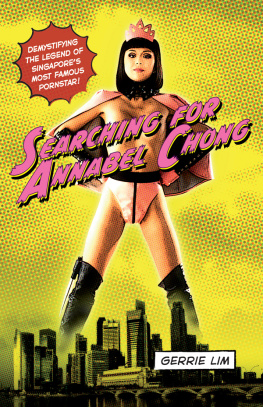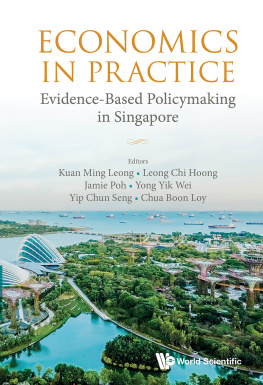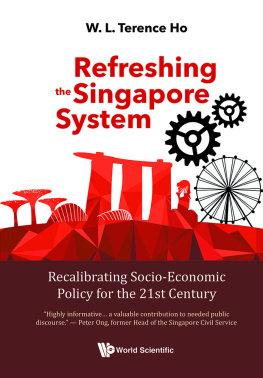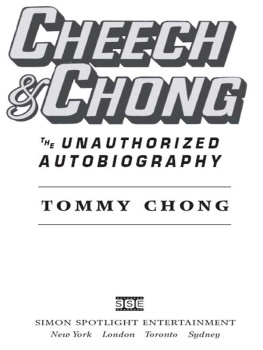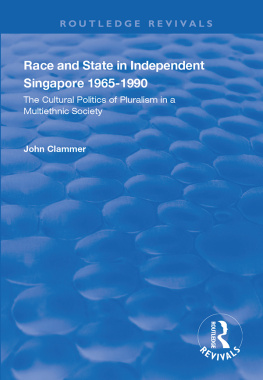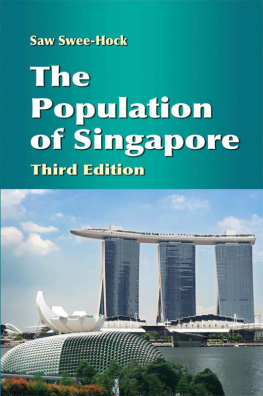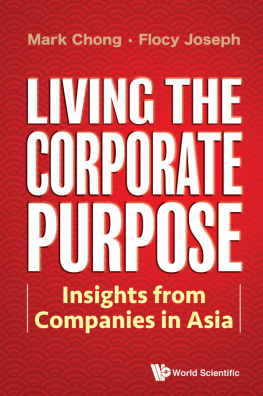Published by
World Scientific Publishing Co. Pte. Ltd.
5 Toh Tuck Link, Singapore 596224
USA office: 27 Warren Street, Suite 401-402, Hackensack, NJ 07601
UK office: 57 Shelton Street, Covent Garden, London WC2H 9HE
Library of Congress Cataloging-in-Publication Data
Names: Chong, Terence, editor.
Title: The state and the arts in Singapore : policies and institutions / edited by Terence Chong (ISEAS-Yusof Ishak Institute, Singapore).
Description: New Jersey : World Scientific, 2018. | Includes bibliographical references.
Identifiers: LCCN 2017057077 | ISBN 9789813236882
Subjects: LCSH: Art and state--Singapore--History--20th century. | Art and state--Singapore-- History--21st century. | Arts, Singaporean--20th century. | Arts, Singaporean--21st century.
Classification: LCC NX750.S55 S73 2018 | DDC 700.95957/0904--dc23
LC record available at https://lccn.loc.gov/2017057077
British Library Cataloguing-in-Publication Data
A catalogue record for this book is available from the British Library.
Copyright 2018 by World Scientific Publishing Co. Pte. Ltd.
All rights reserved. This book, or parts thereof, may not be reproduced in any form or by any means, electronic or mechanical, including photocopying, recording or any information storage and retrieval system now known or to be invented, without written permission from the publisher.
For photocopying of material in this volume, please pay a copying fee through the Copyright Clearance Center, Inc., 222 Rosewood Drive, Danvers, MA 01923, USA. In this case permission to photocopy is not required from the publisher.
For any available supplementary material, please visit
http://www.worldscientific.com/worldscibooks/10.1142/10899#t=suppl
Desk Editor: Shreya Gopi
Typeset by Stallion Press
Email:
Printed in Singapore
Acknowledgements
This book began with the realisation that while there were several well-written academic articles on cultural policies and art institutions in Singapore, they were scattered and securely locked in our respective ivory towers. What was needed was a book that would serve as a ready reference for researchers, students and policy makers who were interested in the way the state has defined and utilised arts and culture for the nation-building project. After several brainstorming sessions, a list of key cultural policies, art institutions and government reports that have shaped the way arts and culture is practiced in Singapore was drawn, together with the writers who could best discuss and analyse them. These included cultural scholars, art administrators, art critics, practitioners and journalists, many of whom have been observing the local arts scene for a long time.
Two closed-door workshops for the writers were held at the Institute of Policy Studies (IPS) in November 2013. There writers presented their draft chapters to fellow contributors who, in turn, offered constructive feedback. These workshops enabled the writers to fine-tune their chapters and sharpen their arguments. When these draft chapters were better developed, they were presented at a public conference in October 2014. This public conference saw the gathering of the wider local arts community including practicing artists, arts administrators, and civil servants. Another round of feedback was collected and the writers returned to revise their chapters once again before final submission.
Many people must be thanked in an undertaking such as this. First and foremost, I am grateful to IPS Director Janadas Devan for inviting me to lead the project and edit this volume. I appreciate the time that ISEAS-Yusof Ishak Institute afforded me to work on this project. The IPS team has been wonderful to work with. It includes Arun Mahizhnan and Tan Tarn How who offered invaluable advice along the way; as well as Irene Lim and Chan Yi Ying who organised the conference; Joanna Koh who helped with the workshops; Alice Yang who handled the contractual arrangements with the contributors; Leong Wen Shan who copy-edited the chapters; and Hoe Sufern, whose immense contributions have made this book a better product. I am grateful to Carol Soon for helping with the administrative process as the volume neared the finishing line. Finally, it is with deep sadness that I announce that Lorraine Lim, one of our contributors, passed away in 2017 following complications from cancer.
Foreword
A History of Arts and Cultural Policies in Singapore
Janadas DEVAN
In 2012, we commissioned a volume of essays to trace the course of cultural policy in Singapore from the 1950s to now. We did so because we do not have such a history. We have monographs on the history of various arts across all our traditions but not a history of arts and cultural policy as such.
The other reason why we embarked on this project is because culture or the idea of culture has always been of importance to the state, though it has never received as much attention as the economy or security or foreign policy. Indeed, when Singapore gained self-government in 1959, we established a Ministry of Culture, with none other than S. Rajaratnam as the first minister. A Ministry of Culture was set up, Rajaratnam explained, in the belief that the shaping of Malayan culture should be a conscious, deliberate and organised effort. There is nothing foolish in a people wanting to plan their cultural evolution, he said.
I would underline these words shaping culture as a conscious, deliberate and organised effort; planning cultural evolution. I daresay this way of putting it might well sound rather quaint paternalistic even to many of us today, including civil servants charged with formulating cultural policy. But unlike many of us today, Rajaratnam (together with many others across the political spectrum then, from right to left, from communist to non-communist) deeply believed that one could build, construct, achieve a common culture as much as one could build an education system or erect an industrial base or achieve military strength. This was taken for granted, part of the Zeitgeist of the post-war, post-colonial period.
How would we describe the aims of cultural policy today? I do not think there will be agreement. And that is the other reason why I thought it would be instructive to attempt a history of arts and cultural policy in Singapore. As Raymond Williams the great British Marxist cultural historian who had a tremendous impact on literary and cultural studies in the 1950s and 1960s put in his seminal Culture and Society: the history of the idea of culture is a record of our reactions, in thought and feeling, to the changed conditions of our common life. In other words, a history of cultural policy in Singapore over a span of more than 50 years can be a window to the evolution of our self-conception as a people, society and country.



